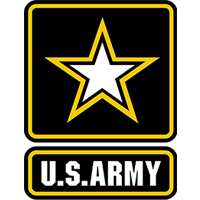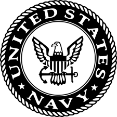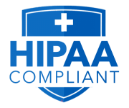Do you have a box of old film negatives tucked away in a closet, filled with memories waiting to be rediscovered? Perhaps you’re a professional photographer or artist with a valuable archive you’d like to preserve digitally. Whatever the reason, converting your film negatives to digital images is a fantastic way to safeguard your precious memories and make them readily accessible.
Smooth Solutions offers negative scanning services to help you convert your negatives to digital format, catering to personal and professional needs. But before we explore their offerings, let’s explore the different methods available for digitizing your film:
1. Flat Bed Scanner
Flatbed scanners offer a cost-effective solution for converting film negatives to digital format. These scanners function similarly to a photocopier but with a special light source suited for negatives. You place the negatives face down on the scanner bed, and the light shines through them, capturing the image data for conversion.
However, quality may not match dedicated scanners due to resolution and film thickness limitations. Scratches and dust can also be more noticeable. Despite this, flatbed scanners are a good choice for smaller collections or negatives that don’t require the absolute highest quality. Many even come with adapters for negatives and slides.
2. Drum Scanner
Drum scanners offer a high-quality negative conversion service. They carefully scan each negative or slide frame by frame, resulting in incredibly detailed, high-resolution digital images.
Due to their precision and slower operation, drum scanners are typically used for professional applications or negatives and slides with exceptional value.
This careful process ensures that every detail is captured with utmost clarity, making drum scanners the preferred choice for archiving valuable or professional-grade photographic materials. Their ability to produce superior digital reproductions sets them apart from other types of scanning equipment, ensuring high image quality.
3. Slide Scanner
Slide scanners are designed to handle slides’ transparency more efficiently. Their feeding mechanisms are often optimized for slides’ size and thickness, enabling faster batch scanning compared to film scanners that might require individual negative placement.
Slide scanners’ core functionality is similar to that of film scanners. Many slide scanners offer high-resolution capabilities, resulting in detailed digital images suitable for archiving or printing.
It’s important to note that slide scanners may not achieve the best quality. However, they are a big step up from flatbed scanners in terms of both image quality and efficiency when dealing specifically with slides.
4. Smartphone App With Digitizing Feature
Smartphone apps offer a quick and convenient way to convert negatives to digital images on the go. These apps use your phone’s camera to capture a photo of the negative. Since negatives appear inverted with their colors reversed, the app then applies software filters to invert the colors, transforming the negative into a positive image.
Again, these cameras may not have the same resolution or image quality as dedicated scanners. Additionally, capturing a clear image of a negative requires careful setup and lighting control to avoid glare or uneven illumination. Dust and scratches on the negative can also be more pronounced in the final digital image.
Smartphone apps are a suitable option for casual users who want to digitize a few negatives for personal viewing quickly.
5. Digital Camera
For budget-minded individuals, a digital camera and some creativity can be used to convert film negatives to digital format. This method requires some effort and knowledge of photography basics, but it can be a good option for small projects.
The setup involves a light source, your digital camera to manual mode, and negative holders or a makeshift negative holder. You might have to experiment with camera settings like aperture and exposure to achieve optimal results.
However, uneven lighting, camera shake, and difficulty achieving perfect focus can affect the final image. Additionally, dust and scratches on the negative are likely to be more prominent.
For best results, consider using a DSLR camera with a macro lens for greater control and detail.
6. Digital Convertor Box
Digital converter boxes, those handy devices that once let you view negatives and slides on your TV, might seem like a quick way to convert them to digital.
However, the digital output from these converters is typically low resolution and compressed, making it unsuitable for long-term archiving. That’s why we don’t recommend using them for business purposes.
7. Professional Negative Scanning Service
A professional negative scanning service, like Smooth Solutions, is the most preferred negative to digital conversion service.
We use a variety of high-quality film scanners, including Nikon Coolscan and Epson flatbed scanners, to ensure exceptional results when converting negatives to digital format.
Our secret weapon is the Digital ICE technology. This advanced process pre-scans your film using infrared light to identify even the tiniest dust particles and scratches before the actual scan. These imperfections are then corrected seamlessly, delivering cleaner, more pristine digital images.
Our digitized negatives service also tackles color imbalances, reduces grain noise, and optimizes contrast and exposure for each slide or negative, ensuring your images retain their natural beauty.
We offer customizable resolutions to suit your needs that can help you choose the right balance between detail and file size. Finally, our expert technicians carefully crop and rotate your images, enhance color balance, and even remove red-eye, breathing new life into your cherished memories.
With Smooth Solutions’ convert negatives to digital service, your precious film is in the best hands. Contact us today to discuss your needs and discover how we can help you preserve your treasured memories.














